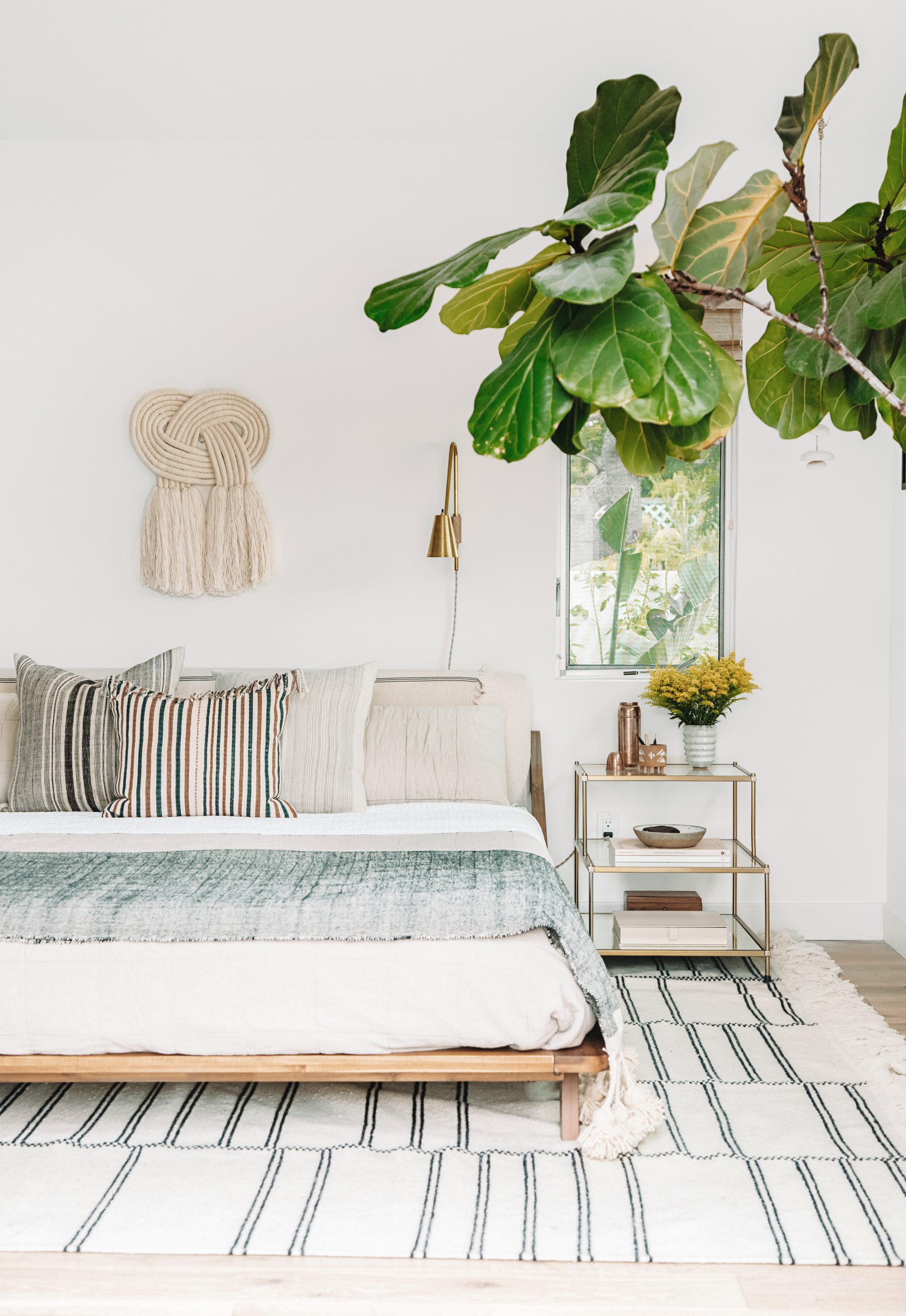We may earn revenue from the products available on this page and participate in affiliate programs.
I had it down like clockwork: crank up the brightness, pump up exposure just a touch, and swipe the temperature scale all the way left to “cool.” My white-walled room, when captured in photos, hardly seemed white, and I knew it had everything to do with my yellow-tinged overhead light.
In spite of the little daylight that had filtered through the shafted window of my old apartment, for the few, short hours that natural light sufficed, my walls looked pure white, making my gallery wall look perfectly polished, my matching white bedding brilliant, and every single Instagram I took wonderfully aligned with my cool-toned grid. Until 4pm struck, and I was forced to turn on my light—even in the summer.
The yellow light felt sickly in my tiny space that I had accented with soft pillows and prints, as well as a rainbow of books stacked on my small desk. There seemed to be no way to fake natural light in the shadowy space—until I rethought my light bulbs.
The overhead lighting fixture in my apartment had been fitted with a soft white bulb, but research led me to opt for a daylight bulb instead—which immediately flushed my space with the bright, cool-toned light I had been craving all along. My Instagram filtering process suddenly required fewer steps.
Your light bulbs make a major impact on how the colors of your walls appear (especially after dark!) and they can completely change the atmosphere of your space. Different styles and spaces call for different lighting—this easy guide will help you to determine what’s right for you.
Assess the Temperature
“LED lights have to color-correct a blue light source to become white light,” explains Shaun Fillion, MPS-L Lighting Design Program Director at the New York School of Interior Design and Lighting Studio Manager at RAB Lighting. “ In the days of halogen light bulbs, there was really one color. Now, with the mixing of phosphors in LEDs, you can get lights that give off different colors.”
Lighting temperature is measured in Kelvin, and while different light bulb manufacturers have different descriptors for different temperatures, there’s a simple rule of thumb: “The lower the number, the more orange-y and the more like candlelight it is. The higher the number, the more blue it is,” says Fillion.
What temperature you choose largely depends on your personal and cultural preferences. Markets in Asia demonstrate a preference for cooler light, while European consumers tend towards warm light. Neutral light—around 3500K to 4000K—is often used in workplaces in the United States.

Don’t Forget CRI
More important than temperature, Fillion notes, is the CRI—color rendering index of your light bulbs. This doesn’t relate to coolness or warmth, but rather, how accurately your lighting displays colors.
“What CRI measures is how much of each wavelength is perceived,” says Fillion. “I have a red couch in my home and I want that couch to look—not brown. The CRI is a measurement of how accurately the light will show off colors. Red is usually the hardest color for LED to render, so I need light bulbs with a high CRI.”
There are increasing regulations regarding CRI, too. California, Fillion explains, is one of the most progressive states in terms of light requirements, mandating that all light bulbs sold in-state have a CRI of 90-percent or more.
It’s likely then, that the bulbs causing my apartment to look yellow instead of white didn’t just have a warmer tone—they had a lower CRI. If cooler lighting isn’t quite your style, a light bulb with a high CRI will help you to add a warmer tone to your space, without making your interior look off.

When in Doubt, Try Dimmers
Here’s the rub: there are increasing studies that show that blue-toned light isn’t the best for our health. It suppresses melatonin production, making it difficult to fall asleep, so it might not be the ideal solution for nighttime lighting.
An easy fix? “The color of light has some function, but the level of light is even more important,” says Fillion. He recommends using dimmers as the day goes on, to decrease the level of light, so your eyes take in less blue light as the time for bed grows nearer. Alternatively, if you live in a home with little natural light, you can use cooler-temperature light bulbs for your overhead lighting during the day, and switch to warm-toned lamps at night.
Lighting temperatures, Fillion stresses, all come down to preference, but with a high CRI and a little strategizing on your lamp or dimmer switch situation, you can find your perfect light—no extra filters necessary.
More lighting tips:
This Simple Decor Swap Helped Me Fall Asleep Fast
Affordable Lighting That Still Looks Chic
8 Trending Statement Lights Everyone Is Obsessed With Right Now
